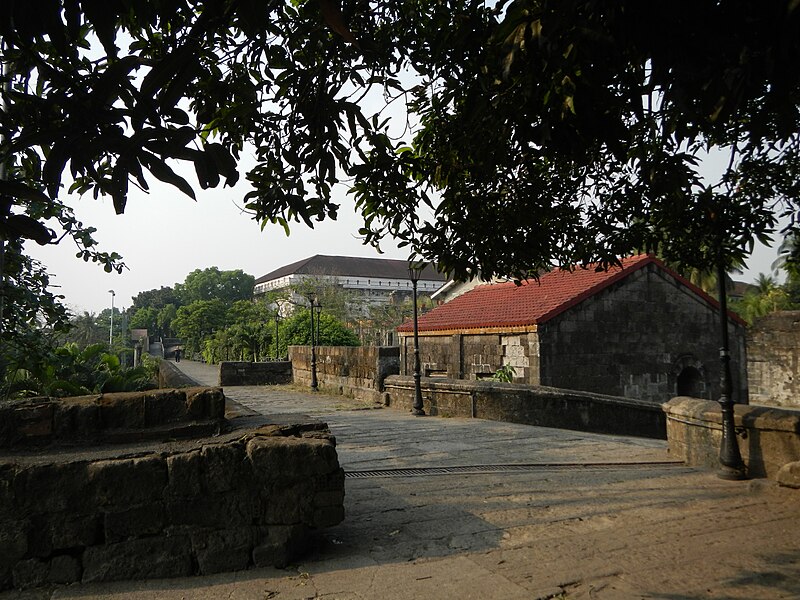The Walls of Intramuros
HISTORY OF THE WALL
Intramuros (Latin for "Within the Walls")is the historic walled area within the modern city of Manila, the capital of the Philippines. The name Intramuros refers to the fortified city founded at the mouth of the Pasig River shortly after 1571 by the Spanish Conquistador Miguel Lopez de Legazpi. The walls were constructed in 1521. It was destroyed during an earthquake and was never rebuilt. Built in the 18th Century during the renovation of the riverside defenses, it opened to the river wharves, but the American engineers tore down the gate and part of the walls in 1903 to open the road to Intramuros from Magallanes Drive. Urban congestion during the late 19th and early 20th centuries gradually encircled the site (the moat was filled in 1905) and wore down and replaced the distinctive Spanish colonial architecture with government offices. In 1994, U.S. Bombing completed the reduction of the city to rubble. The site was cleared after World War II, but reconstruction proceeded slowly. In 1951, Intramuros was declared a historical monument.
 |
| Source: https://img.theculturetrip.com/1024x/smart/wp-content/uploads/2018/06/img_20170527_174812.jpg |
The purpose of building the Walls of Intramuros was to be the Spaniard's political and military base in Asia. Grand administrative establishments, as well as religious and educational institutions, thrived within Intramuros, where only the nation's most powerful clans (mostly from Spanish descent) could settle.
ITS IMPACT TO THE CITIZENS/COUNTRY/WORLD
Due to constant attacks from foreign invaders, coupled with natural and man-made disasters, defensive features surrounded the city, including moats, cannons, and fortified walls, from bulwarks to ravelins. Within the walls was Fort Santiago, which was significantly served as military headquarters of Spanish, British, United States, and Japan during different eras, throughout Philippine history. It is known for it's defense structures and protecting the citizens within the walls. Because of that, the people appreciated the arrangement of the defense structures, such as the bulwarks, ravelins, and redoubts are strategically located along the massive walls of Intramuros following the design of medieval fortifications.
ITS IMPACT OR CONTRIBUTION TO HUMAN RELATIONSHIPS
 |
| Source: https://img.theculturetrip.com/wp-content/uploads/ 2018/06/413021_252438438188981_1838649692_o.jpg |
The contribution that the walls were built was the protection and safety of the people living and staying within the Walled City. With the defense features and structures to Intramuros, it builds up a connection from the people living there and how much it has done since it was built it 1521. Ever since World War II, the Walled City had major damage with some of the buildings destroyed, the people proceeded to rebuild the fallen walls as a way to show their respect to the original builders and paying their condolences of the walls protecting them, especially from the invaders outside the country that are creating massive destruction to the area, from dangers that have come their way.
"GOOD FENCES MAKE GREAT NEIGHBORS"
With this statement, "Good fences make great neighbors", the Walls of Intramuros has kept the people within the city, but it made the citizens living there to respect each other's property. This would also talk about the citizens that live outside the wall. The people would be paying their respect to each other, inside or outside the wall and staying on good terms. Maintaining a good fence, like the Walls of Intramuros, means that the citizens living within the walls are all respectful to each other, just like the great neighbors that they are.
 |
| Source: https://en.wikipedia.org/wiki/Intramuros#/media/ File:FvfIntramuros0735_32.JPG |
"MENDING WALLS"
The poem makes a relevance with the wall is about the territorial rights that a person can between their neighbors. At first, they would be questioning that they need to have such a wall in the first place, they would think that the people living outside the Walls of Intramuros, would be much different, making them realize that they are keeping themselves apart, including the people living within the wall. However, they would realize a wall was just blocking themselves and having a good fence instead, they would become great neighbors and keeping in good contact with each other is showing each other's respect towards one another.



No comments:
Post a Comment